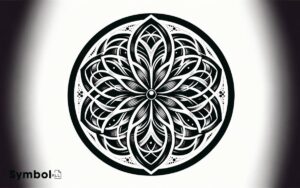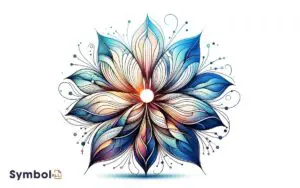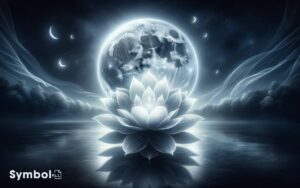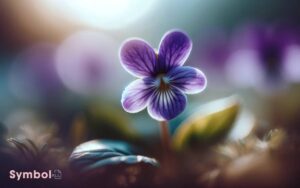What Flower Symbolizes Unrequited Love? Yellow Acacia!
The yellow acacia stands as a poignant emblem of unrequited love. This vibrant flower symbolizes the intense yet unreturned affections you might harbor towards someone.
In the nuanced language of flowers, established during the Victorian era, each bloom tells its own story. The yellow acacia, with its eye-catching hue and delicate composition, reflects the complex emotions and neurochemical reactions triggered by love that’s not reciprocated.
It captures the essence of longing and the hope for acknowledgment, yet also signifies the need for self-preservation.
Exploring the world of floriography opens up a deeper understanding of this symbolic communication, further enriching your perception of unrequited love’s emotional landscape.
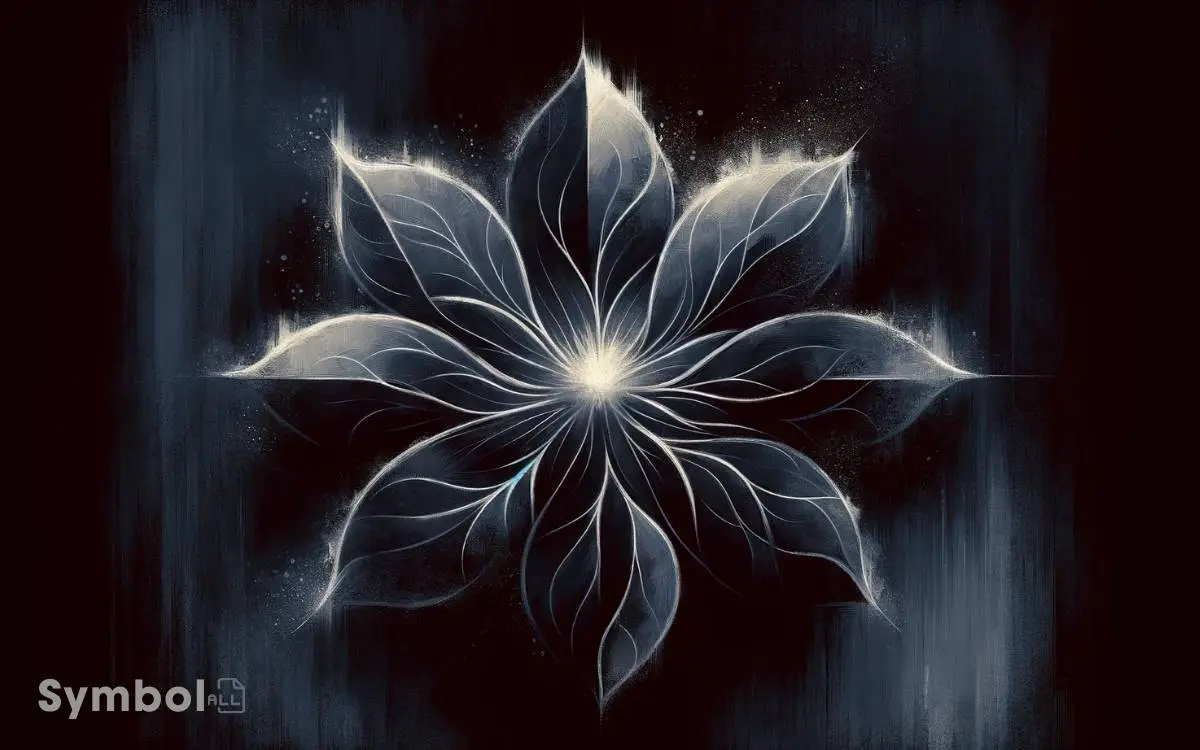
Key Takeaways
The Language of Flowers
Throughout history, flowers have served as a nuanced language, enabling people to express emotions and messages where words might fail.
This intricate system, known as floriography, emerged prominently in the Victorian era but traces back to ancient civilizations.
Each flower and even its color conveys specific sentiments. Researchers studying botanical symbolism discover that these natural elements embody a vast array of meanings, from love and desire to grief and sorrow.
For instance, red roses universally symbolize deep love and passion, whereas lilies often represent purity and renewal. You’re tapping into an age-old practice when you select flowers based on their meanings.
Understanding this language allows for a deeper connection with nature and enriches interpersonal communications, offering a silent but profound way to convey what’s in one’s heart.
Unrequited Love Defined
Unrequited love, a term that captures the essence of longing and affection not reciprocated, stands as a complex emotional experience deeply rooted in human relationships.
You might find yourself deeply infatuated with someone who doesn’t share your feelings, leading to a state of emotional imbalance and distress.
Scientifically, this phenomenon triggers a cascade of neurochemical reactions within your brain, akin to those experienced during addictive behaviors.
The longing, accompanied by an intense desire for reciprocation, activates neural pathways associated with reward and motivation, yet the lack of fulfillment leads to frustration and, often, profound sadness.
Understanding this, it’s clear that unrequited love isn’t just a literary trope but a tangible, impactful emotional condition that can influence mental health and well-being.
Symbolic Flower Revealed
You’ll now uncover the historical significance of flowers, exploring how they’ve been pivotal in human ceremonies and rituals across ages.
By examining their emotional interpretations, you’ll grasp how specific blooms convey complex feelings, serving as silent messengers of love, grief, and celebration.
Flowers Historical Significance
For centuries, flowers have embodied complex symbols, exploring the annals of history, and you’ll discover tales where flowers weren’t mere decorations but potent symbols.
In ancient civilizations, such as Egypt, flowers were integral to religious rituals, embodying divine favor or protection.
Moving through time, the Renaissance period saw flowers like the acacia representing secret love, used to convey messages in a society where direct expression of such feelings was often forbidden.
Fast forward to the Victorian era, and a detailed language of flowers, or floriography, developed. This allowed individuals to express sentiments and engage in complex social exchanges without uttering a single word, showcasing flowers’ enduring power to communicate.
Emotional Interpretations Explored
Delving into the domain of emotional symbolism, let’s explore how specific flowers can encapsulate complex human feelings, revealing deeper insights into our emotional landscapes. The symbolic flower for unrequited love is noticeably the yellow rose.
This choice isn’t arbitrary; it’s deeply rooted in the language of flowers, known as floriography, which assigns meanings to different blooms based on their color, shape, and variety.
- Color Psychology: Yellow often represents friendship and joy but, in this scenario, signifies unreciprocated feelings.
- Historical Usage: Traditionally, yellow roses were used to symbolize jealousy and infidelity, eventually evolving to denote unrequited love.
- Botanical Characteristics: The beauty and fragility of roses mirror the delicate nature of love itself, particularly when it’s one-sided.
Understanding these layers adds depth to our perception of emotional symbolism in flora.
Cultural Impact Analyzed
Many cultures have long embraced the lotus flower as a symbol of purity, enlightenment, and rebirth, reflecting its significant impact on human emotions and societal values.
This emblematic flower, often found blossoming in murky waters, symbolizes the idea that beauty and purity can emerge from challenging circumstances.
Scientifically, the lotus’s ability to regulate temperature, similar to humans, and its unique pollination process, underscore its symbolic resilience and adaptation.
In the context of unrequited love, the lotus represents the strength to rise above unreciprocated feelings, offering hope and renewal to those enduring the pain of love not returned.
Its cultural significance teaches individuals to find inner peace and personal growth amidst emotional turmoil, illustrating the profound influence of nature on human experiences and societal interpretations.
Historical Origins
You’ll find that the roots of symbolic flowers stretch back to ancient mythology, where deities and heroes are often intertwined with specific floral emblems.
This historical backdrop offers a rich tapestry of meanings that have evolved alongside various cultures, shaping the way these plants are perceived today.
Understanding these origins not only enlightens you about past beliefs but also reveals how these symbols have transformed over centuries to hold contemporary significance.
Ancient Mythology References
Throughout history, various cultures have imbued flowers with symbolic significance, often rooted in ancient mythology.
These stories provide a deeper understanding of the emotions and values associated with certain blooms, especially those symbolizing unrequited love.
Here’s how:
- Greek Mythology: The anemone, linked to the tale of Adonis and Aphrodite, represents a love that’s beautiful yet tragic, highlighting the fleeting nature of life and the sorrow of love lost.
- Roman Lore: The yellow acacia, featured in tales of secret love and unreturned affection, embodies the pain and beauty of loving someone from afar.
- Japanese Folklore: The camellia tells a story of a noble death for love unacknowledged, symbolizing the heart’s endurance in the face of unreciprocated feelings.
These mythological references enrich our understanding of flowers’ symbolism, offering a profound glimpse into the human condition.
Cultural Significance Evolution
Historically, the symbolic meanings of flowers have evolved dramatically, reflecting changes in societal values, cultural exchanges, and scientific understanding.
Initially, flowers’ meanings were deeply rooted in ancient mythologies and religious beliefs, offering a language beyond words.
As societies progressed, the Renaissance era brought a heightened appreciation for the beauty and symbolic nuances of flowers, integrating them into art and literature.
The Victorian era marked a significant evolution, where flowers became intricate tools for expressing emotions, including unrequited love, in an era where direct expression of such feelings was often frowned upon.
This era’s fascination led to the creation of detailed floral dictionaries, codifying the language of flowers across cultures.
This evolution showcases how human interaction with nature adapts to cultural shifts, embedding deeper meanings into the botanical world.
Cultural Significance
Many cultures across the globe attribute profound significance to flowers, often using them as symbols to express complex emotions and traditions.
Flowers aren’t just aesthetic adornments but carry deep symbolic meanings, varying greatly from one culture to another.
Here’s a deeper look into the cultural significance of flowers:
- Historical Context: In ancient civilizations, flowers were integral to religious ceremonies and rites, often symbolizing divine protection or mortal impermanence.
- Emotional Expression: Cultures have long used flowers to communicate feelings that were otherwise not spoken, including love, grief, and even unrequited love.
- Social Status and Identity: Certain flowers have represented wealth, social status, or belonging to a particular group or ideology, deeply embedded in the cultural fabric of a society.
Understanding these layers of meaning enhances your appreciation of the symbolic power flowers hold in human culture.
Emotional Resonance
As you delve into the world of symbolic flowers, you’ll find their emotional resonance spans across literature and personal relationships.
Studies show that floral imagery in poetry and prose can greatly alter readers’ emotional states, enhancing their connection to the narrative.
Similarly, gifting flowers in relationships is proven to strengthen bonds, communicating emotions when words fall short.
Significance in Literature
Throughout literature, flowers have often symbolized deep emotional resonances, reflecting the complexities of human feelings and experiences.
These symbols serve not just as vital elements, but as essential, layered components of storytelling that convey unspoken emotions and themes.
Here’s how they deepen our understanding:
- Representation of Unspoken Emotions: Flowers often embody the emotions characters can’t or won’t verbally express.
- Symbolic of Life Cycles: They mirror the transient nature of life, love, and relationships, symbolizing birth, growth, decay, and rebirth.
- Cultural and Historical Context: Different flowers carry specific meanings across cultures, adding a rich layer of interpretation based on historical and societal contexts.
Understanding these symbolic uses enhances your appreciation of literary works, offering insights into the nuanced portrayal of unrequited love and the human condition.
Impact on Relationships
Flowers often weave into the fabric of relationships, serving as powerful symbols that resonate emotionally and illuminate the depths of our connections with others.
When you choose a flower symbolizing unrequited love, it’s not just an aesthetic decision; it’s an emotionally charged gesture that communicates complex feelings without words.
Scientifically, the psychological impact of color, fragrance, and type of flower can greatly influence human emotions and behaviors. For instance, the color red is associated with passion and desire, often intensifying feelings of love or longing.
Gifting a flower that represents unrequited love can either bridge the gap between individuals by acknowledging deep, unspoken emotions, or it can highlight the emotional disparity, potentially straining the relationship.
Understanding the symbolism behind your floral choices can profoundly affect the emotional resonance within your relationships, fostering deeper connections or, conversely, underscoring the chasms between feelings.
The Yellow Acacia
The Yellow Acacia, known for its vibrant blooms, symbolizes secret love and is a fascinating subject of study due to its unique properties and cultural significance.
When you explore the science behind this plant, you uncover aspects that deepen its association with unrequited love:
- Phenology: The timing of its flowering period often aligns with seasons of renewal and growth, mirroring the hope and patience required in unrequited love.
- Pollination Mechanism: Its complex relationship with pollinators, requiring specific conditions for successful pollination, reflects the intricate dynamics of unreciprocated feelings.
- Chemical Composition: The plant produces unique compounds that have been interpreted as metaphors for the enduring nature of secret love, despite the challenges it faces.
Understanding these elements offers a richer appreciation of the Yellow Acacia’s symbolic significance.
Folklore and Myths
Exploring the domain of folklore and myths, you’ll find that flowers have long served as central characters in narratives that intertwine human emotions with the natural world, often embodying complex symbols of love, sacrifice, and renewal.
In these stories, unrequited love is frequently symbolized by specific flowers, each carrying a unique tale of love not returned.
For instance, the myth of Narcissus, from which the term narcissism originates, features a flower emerging where he perished, pining for his reflection, epitomizing self-directed love and the pain of longing unmet.
Similarly, in some cultures, the anemone represents forsaken love, stemming from its association with the death of Adonis and Aphrodite‘s tears.
These tales, deeply rooted in human psychology and societal norms, illustrate the profound connection between flora and the spectrum of human emotion, particularly the poignant sting of love unreciprocated.
In Literature and Art
Throughout history, countless artists and writers have infused their works with floral imagery, using these natural elements to convey intricate themes of love, mortality, and rebirth.
Specifically, in the context of unrequited love, certain flowers have emerged as potent symbols:
- The Yellow Tulip: Traditionally symbolizes hopeless love, often used in literature to represent the one-sided nature of an affection that isn’t reciprocated.
- The Cyclamen: In art, it frequently signifies a parting or resignation, hinting at the sorrow and acceptance of unrequited love.
- The Acacia Flower: Known for symbolizing secret love in Victorian floriography, it subtly conveys the hidden, often unspoken feelings of those who love from afar.
These symbols serve not just as decorative elements but as complex metaphors, offering a deeper understanding of the human condition.
Modern Interpretations
In today’s digital age, you’ll find that artists and writers have adapted the traditional symbolism of flowers, integrating these motifs into contemporary narratives and visual media to explore themes such as identity, social issues, and environmental concerns.
This modern interpretation hinges on the deep-rooted meanings flowers hold, particularly those symbolizing unrequited love.
Through scientific analysis, we comprehend that these symbols carry complex biochemical signatures, mirroring the intricate nature of human emotions.
Consequently, modern creators use these floral emblems to evoke a nuanced understanding of love, loss, and longing. They investigate the psychology of unrequited love, employing flowers not just as aesthetic elements but as profound metaphors for the human condition.
This approach enriches storytelling, making the exploration of unrequited love more relatable and poignant in contemporary culture.
Creating a Bouquet
Crafting a bouquet involves selecting flowers that not only complement each other visually but also harmonize their symbolic meanings, creating a layered narrative within the arrangement.
When you’re focused on conveying unrequited love, you need to choose wisely to guarantee your bouquet accurately reflects the depths of your feelings and respects the complexity of emotion involved.
- Cyclamen: Symbolizes goodbye and resignation, fitting for unrequited love’s often final acknowledgment.
- Yellow Chrysanthemums: Represent rejected love, adding a layer of sorrow and acknowledgment of unreciprocated feelings.
- Lavender Roses: While roses typically symbolize love, lavender ones express enchantment and love at first sight, subtly nodding to the unfulfilled desires and fantasies harbor in unrequited love.
This combination tells a story of love, longing, and the sobering acceptance of feelings not returned, offering a profound way to communicate through florals.
Other Symbolic Flowers
While we’ve explored flowers that embody the nuances of unrequited love, let’s now examine other blooms, each with its own unique symbolism, to broaden our understanding of floral language.
| Flower | Symbolism |
|---|---|
| Lily of the Valley | Return of happiness |
| Chrysanthemum | Loyalty and devotion |
| Daffodil | New beginnings, rebirth |
| Hydrangea | Gratitude, grace |
These flowers carry messages that span the spectrum of human emotions and experiences. For instance, the Lily of the Valley, with its delicate and fragrant bells, whispers of happiness returning after a period of adversity.
Meanwhile, the robust and colorful Chrysanthemum stands as a proof of enduring loyalty and devotion. Each flower holds a key to expressing sentiments that words alone might fail to convey, enriching our interactions and connections with others.
Finding Solace
Amid life’s tumultuous waves, flowers serve as beacons of comfort and solace, offering silent yet profound support to the human spirit. In the domain of unrequited love, certain blooms hold a special significance, embodying the complex emotions involved.
These botanical symbols provide a pathway for understanding and healing:
- Cyclamen – Represents resignation and goodbye. It encourages the release of past attachments, facilitating emotional closure.
- Yellow Tulip – Symbolizes unreturned love but also conveys a sense of hopeful optimism. It’s a reminder that self-worth isn’t dependent on reciprocation.
- Lavender – Known for its calming properties, lavender symbolizes serenity and tranquility, aiding in the process of inner peace and acceptance.
Do Yellow Acacia and Camellia Flowers Have Similar Symbolism in Love and Relationships?
Yes, both yellow acacia and camellia flowers symbolize love and admiration. The meaning of the camellia flower is love, passion, and perfection, while the yellow acacia represents friendship and secret love. In relationships, these flowers can convey deep emotions and affection.
Conclusion
As you wander through a garden of vibrant flora, it’s a curious coincidence that the yellow chrysanthemum catches your eye, symbolizing unrequited love. This flower, with its rich historical roots and cultural significance, carries a poignant reminder of love not reciprocated.
Integrating it into a bouquet speaks volumes in the language of flowers. Understanding its meaning and the scientific intricacies of its beauty offers a unique solace, transforming silent longing into a shared, silent dialogue of the heart.

